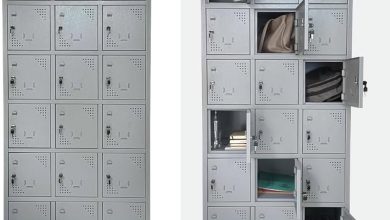Business
Industrial Barcodes and Expiration Dates Printing Methods

Many techniques exist in industrial date code printer in pakistan, each requiring specialised skills. But only digital printing excels in printing barcodes and expiration dates, while other technologies excel at printing books and artwork.
They are not suitable for barcode/expiration date coding in industrial date code printer in pakistan settings because they use dye-sublimation. There are several solutions for this application including inkjet printers and thermal transfer over printers.
Determining which of these techniques is ideal for coding expiration dates and barcodes on primary, secondary, and tertiary product packaging will be the topic of this article Using these three applications, we can determine which printer is suitable for your needs based on substrates and manufacturing line conditions.
Primary Package Coding
The principal package is in direct contact with the item. Typical primary packaging includes bottles, cans, packs, and wraps. The retail or consumer packaging. Given the primary packaging is design for consumers, barcodes and expiration dates are typically added to help with purchasing.
So do the materials used to construct basic packaging. These substrates have different properties that must be consider for appropriate coding. For coding, enterprises can choose from the following options based on substrate and manufacturing line factors.
They are perfect for high-volume printing
Production lines favour continuous inkjet printers. In CIJ printers, an oscillating printhead creates continuous ink flows by pressurising an ink/solvent mixture from a common reservoir.
Printing with CIJ printers is suite for large-volume production lines due to the high pressure inkjet mechanism. Printing on items at 1050 fpm (320 mpm) is possible with DuraCode CIJ printers, however slower printing speeds are also possible. The suitable ink cartridges for your packaging material can also code porous and non-porous substrates with CIJ printers.
Temperature-Controlled Thermal Transfer Over printers and Case Coding Printers
High-DPI (dots per inch) printing options include thermal transfer over printers and high-resolution case coding printers. Due to the high DPI requirements of barcodes and QR codes on product packaging, firms who use high DPI are able to display barcodes and QR codes on major product packaging with more consistency and accuracy.
It outputs full-scale 300 DPI codes, which is ideal for various applications. TTO models label materials by printing a ribbon onto the substrate. With the printhead are small heating sources covered in ceramic. The ribbon is cover in a vibrant wax or resin mix. As the ribbon comes into touch with the heating components, certain pieces melt and transfer onto the substrate, leaving industrial date code printer in pakistan marks.
They use high-density ink to print codes and pictures that are easily read. It’s printed using piezoelectricity and vibrations. The controlled printing process of piezo printheads with high-density ink allows case coding printers to output high DPI codes Huge printheads on many case coding printers like the Precision 72 enable large graphics and case coding.
Applications of Thermal Inkjet Printers
TJ printers are smaller and more flexible than CIJ printers. Portable and bracket-mounted TIJ printers are available. Also, TIJ printers employ easily replaceable ink cartridges, allowing you to swiftly switch from coding nonporous materials like plastic to printing on porous materials like paper. Because each cartridge contains a new printhead, TIJ printers require less maintenance than other printers.
Anser series TIJ printers can code at 120 m/min (394 ft/min), meeting the needs of numerous lines, even though they cannot compete with CIJ printers.
Packing Coding
A uniform barcode application is also require for secondary packaging. In addition to the primary packaging, secondary packaging protects the goods. You can think of the beer cans as primary packaging and the branded paperboard box as secondary.
Secondary packaging equipment can be utilize for primary packaging because many substrates and coding requirements are the same. Secondary packing, on the other hand, is different.
Third-party packaging protects goods from harm during transport. To communicate required information, pre-printed labels tied to pallets or shrink wrap are prefer. The brown cardboard box is a common secondary packing item that requires barcodes.
Worldwide, nearly 100 billion cardboard boxes are create each year. Scannable barcodes on the box surface are often used to track packages. Corrugated cardboard is absorbent, and its dark colour makes it difficult to see barcodes.
To offer constant standability, CIJ printers cannot generally print at a high enough DPI to qualify. However, many TIJ printers can code at 600 x 300 DPI, which is easily read by barcode scanners.
On porous materials like cardboard, high-resolution case coding printers like the Precision Series 18 excel at printing. Large printheads and high-density ink enable for greater text sizes than TIJ printers, ensuring barcode reader compatibility. They are also easily networkable, making them ideal for industrial applications.
For barcodes and expiration dates, inkjet printing is the best option
These printers can print legible barcodes and expiration dates on products and packaging. In order to select the best machine to print these codes, you must first assess your business’s needs. You need a printer that can print on your items’ surfaces and also fit into your existing production line. Still unsure about which printer is perfect for you? InkJet, Inc. experts can assist you out.




